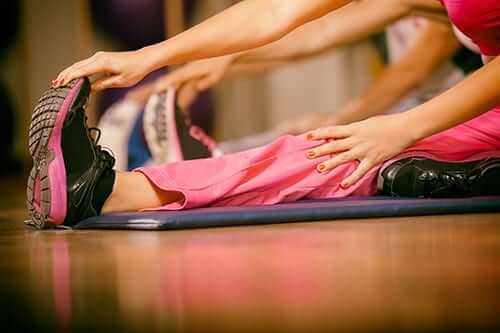Regular exercise can minimize health complications associated with diabetes, including obesity and cardiovascular problems. Find out the connection between flexibility, balance and injuries with diabetes and how the right types of exercise can help.
- It takes more than cardiovascular exercise, such as walking, jogging and aerobics, to build a strong body and achieve overall well-being with diabetes. Gentle stretching after each exercise session is essential to increase flexibility and can minimize the possibility of injuries. Stretching every day can improve balance and help prevent falls. It can help prevent muscular-skeletal problems and give you greater mobility.
- Stretching should be done gently and slowly, without bouncing or jerking. This can put extra stress on your muscles. Stretch until you can feel it, but avoid sharp pain which can injure your muscles. Do stretching after exercising, when the muscles are already warmed up. Stretching cold muscles can lead to injuries. Remember to breathe consistently and deeply while stretching to make it more beneficial and help reduce stress.
- Fit stretches into your daily routine. Even on days you skip cardiovascular exercise, remember to stretch throughout the day. Focus on each muscle you are stretching and always stop before you experience any pain. Perform stretches that focus on both your upper and lower body.
- Perform stretching exercises that help strengthen your ankles, hips and knees which are all areas associated with improved balance. Stretch your buttocks muscle to help lift your legs and give you greater balance when you walk. Try exercises such as toe raises, side leg raises and calf raises. Practice sitting and standing without using your arms or hands for support. Stronger leg muscles will also help to fuel your workouts, such as jogging and walking. Try to go a little further each day and use an Omron pedometer to gauge your progress. Always talk to your health care team before starting any exercise routine.
- Add flexibility exercises to your routine to further improve your balance. Consider Pilates, yoga, Tai chi, and standing on one leg for 20-30 seconds each day to boost your balance. These help flexibility, stretch your muscles and give you an overall sense of calmness and well-being. Ballet is another great way to stretch your muscles, achieve better balance and boost your flexibility. Research has shown after just eight weeks, people with diabetes can experience greater flexibility by stretching their upper and lower body muscles at least three times a week. Add resistance training, such as resistance bands or free weights, for maximum results.
- Remember to stretch safely at all times. Do one stretch per muscle group and try to hold it for 15 to 30 seconds. Breathe deeply to relax your muscles and try not to hold your breath. Use a full range of motion, when possible, to benefit your joints. Stretch opposing muscle groups equally, such as your biceps and triceps. Wear loose, comfortable clothing with breathable socks and supportive footwear when you exercise.
- Stretching not only improves your balance and flexibility to help prevent injuries, it can also play a role in lowering your blood sugar. Research has shown stretching just like walking after meals can help lower blood sugar. Test your blood glucose levels before and after stretching to see its overall impact.
While people with diabetes often hear about the benefits of cardiovascular exercise, it is essential to include stretching in your daily routine. Regular stretching can strengthen muscles, improve balance and flexibility and help you avoid injuries. An added benefit of stretching is the possibility of reducing your blood sugar levels.







Leave A Comment